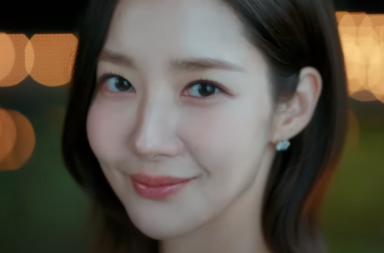This review discusses domestic violence and includes potential spoilers.
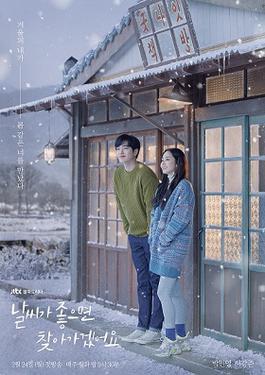
When the Weather is Fine is a true slice-of-life melodrama that delivers both breadth and depth despite what appears to be a slow pace and simple plot. The drama is based on a 2018 novel of the same name by Lee Do-woo and aired on JTBC from February to April, during the same months it depicts as the cold of winter melts into the green of springtime. Like Just Between Lovers, this drama deploys the metaphor of coldness to represent the season and life itself. Overall, the drama contains numerous thematic threads that are poignant and generally strikes a balance between melodrama and comedy. By exploring in great detail the relationships between characters, When the Weather is Fine underscores the small but precious responsibilities that come with love.
The drama begins as Mok Hae-won (Park Min-young) leaves her job and life in Seoul to return to her grandmother’s village where she lived briefly as a high schooler. She lives there with her aunt, Shim Myeong-yeo (Moon Jeong-hee), a writer and owner of an inn founded by Hae-won’s late grandmother. As a high schooler, she lived in the village with her aunt after her grandmother passed away and her mother, Shim Myeong-joo (Jin Hee-kyung), was sentenced to jail for the murder of her father. Upon her return, Hae-won confronts a past of unhappy memories that have turned her heart cold.
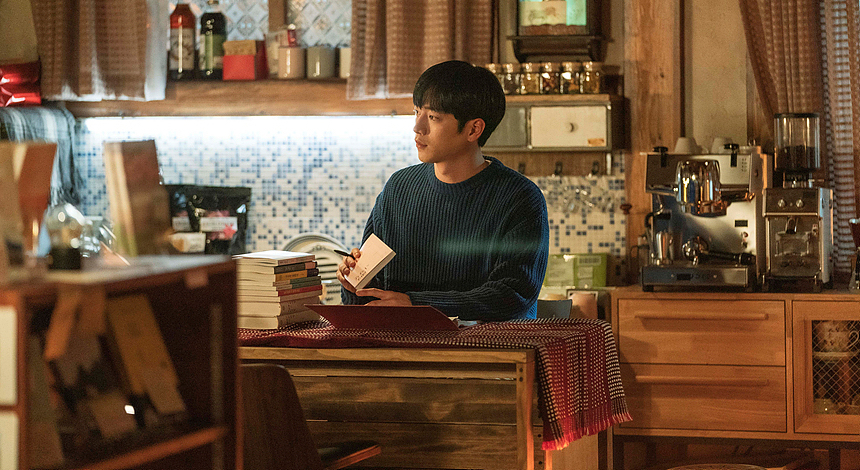
Surprisingly, a figure from her past proves to be a source of warmth. In the village, Hae-won meets her former classmate and neighbor Im Eun-seob (Seo Kang-joon), an insomniac who owns the ironically-named Goodnight Bookstore. Like Hae-won, Eun-seob has his own secret past that prevents him from opening himself up to people. His approach to life is humble, vastly different from Hae-won’s intense life in Seoul where people mistreated her for their own gain. Eun-seob places a great deal of importance on nurturing others, which is evident when he explains his store’s name: “People have a hard time doing basic things, so I hope they will eat well and sleep well. That is my hope.” This is the ethos of the drama, which takes a realistic approach to telling its story. The show roots itself in the real world by depicting characters enjoying coffee, biking to school, reading, and doing other everyday tasks.
Hae-won, whose life in Seoul left little time for these mundanities, questions whether eating and sleeping are all there is to life. Despite this, she quickly realizes that Eun-seob is a reliable man because of his selflessness and thoughtfulness when it comes to that which others neglect or outright ignore. He goes out of his way to light her path home at night, buys her boots suited for the winter, and welcomes her into the bookshop when her home floods. Their relationship is built on mutual understanding, trust, and an affection that opens their hearts back up to others and enables them to heal from their pasts. It is a refreshing and realistic take on romance that doesn’t rely on unrealistic plot twists, magical interventions, or overnight changes of heart.

This realism is upheld by the show’s leads. Park Min-young masterfully portrays a woman who is both vulnerable and bold, elegant and everyday. Kang-joon plays Eun-seob with charming subtlety, expressing his character’s complex psyche through his eyes and body language, every now and again showing a quirky range of comedic timing. Still, Eun-seob is reserved and hesitant, traumatized from his past and fearful of another abandonment. Surprisingly, the cold winter provides them a setting to fall in love, as Eun-Seob explains in a Goodnight Bookstore Secret Post:
“There is only one reason I like winter. I can see your window because the leaves covering my window falls. Christmas comes and New Year’s Day comes. And you come to this town for a few days.”
The pair get closer when Hae-won begins work as a part-timer at the Goodnight Bookstore and joins the store’s book club. The book club is comprised of a cast of characters from the town—including a young boy and his grandfather, a local government worker named Lee Jang-woo (Lee Jae-wook), and Eun-Seob’s fiery little sister, Im-Hwi (Kim Hwan-hee). This group epitomizes one of the drama’s strengths – balance between melodrama and lightheartedness. By building up secondary and tertiary characters and their relationships, the drama emphasizes the various ways that people are inextricably connected to each other.
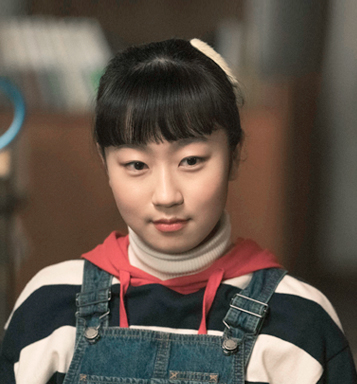
Additionally, the club’s members provide much of the drama’s comedic relief. Im Hwi is the best example of this. Her realism and quirkiness lighten the drama’s mood, but she is not an archetype and doesn’t rely on slapstick comedy. Instead, her approach (like Eun-seob’s) is hilariously realistic and honest. When her former crush asks her why she compliments his looks despite proclaiming that she is no longer interested in him, she replies: “You have broad shoulders, and the school uniform looks good on you. So what do you want me to do about it? My crush on you may be in the past tense, but what do you want me to do when you look so great right now?” Scenes like this remind the audience that reality can be both sad and belly-achingly funny.
Still, the best way to get to know the characters of When the Weather is Fine is through the stories they share with one another. Like Romance is a Bonus Book, stories and storytelling at are the heart of When the Weather is Fine. The book club members discuss their most painful moments in the form of poetry and prose that they share with one another. Despite the lighthearted nature of the club gatherings, they tackle complex and deep topics like abandonment and heartbreak. The drama alludes to a number of poems and books, including Kenneth Grahame’s The Wind in the Willows, Jeong Ho-Seung’s poetry collection The Person I Love, and even Owl at Home by Arnold Lobel.
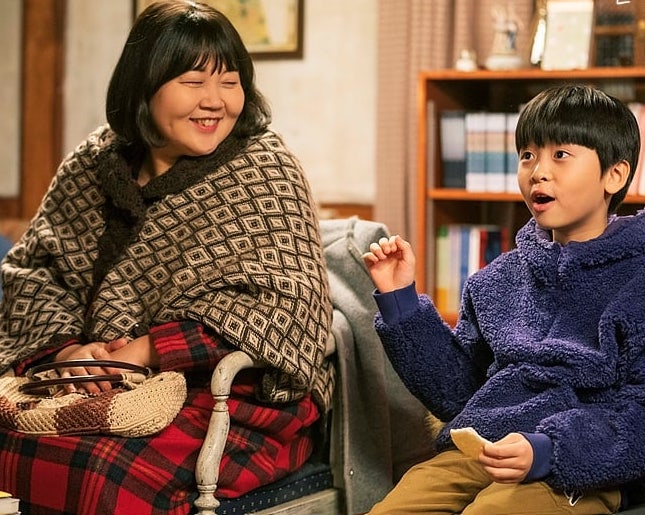
These stories help the audience to unravel characters’ pasts. Around the drama’s halfway point, the dark pasts of the characters become known. The audience learns the horrific truth behind the death of Hae-won’s father, mostly through the memory of Hae-won’s aunt Myeong-yeo. This is because Myeong-yeo – and not Hae-won’s mom, who was sentenced to seven years in prison for the death of her husband – killed Hae-won’s father.
The scenes that depict domestic violence and the Shim sisters’ responses to it make up a larger story that could be a drama itself. The story is complex and colored by personal guilt, regret, and victimization. Indeed, like many abusers, Hae-won’s father was not purely evil, and the drama includes scenes of a seemingly happy family. Myeong-joo asks her sister: “How can I throw him away. It’s just that he hits me when he gets angry. I can’t leave him. Who would take care of him?” Understandly, when the Shim sisters remeber the past, it is permeated by fear and confusion because they are afraid of Hae-won’s father but also see his love for Hae-won. It is heartbreaking to watch the sisters navigate life-threatening intimate partner violence and both Jeong-hee and Hee-kyung deliver breathtaking performances.
Considering the importance of connectedness and storytelling in the drama, When the Weather is Fine takes comprehensive view of domestic violence— it is not just between the abuser and victim, but impacts everyone surrounding them.
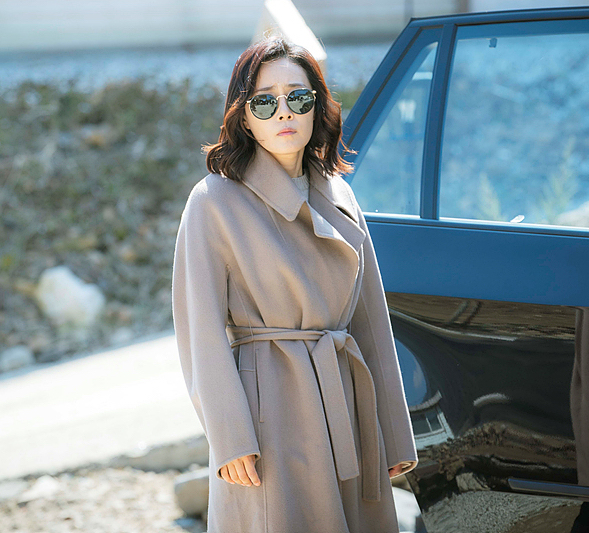
The violence occurs through a complex and vicious cycle that isn’t restrained merely to the instances of abuse. The Shim sisters’ relationship is fundamentally altered as they attempt to help each other and protect Hae-won. This illustrates that domestic violence is pervasive and not always overt, especially when children are involved; parents can go to great lengths to maintain a happy family façade for their kids. Even in adulthood, Hae-won does not know the truth behind her father’s death. The insidious nature of domestic abuse means that it has generational impact and is felt by the Shim women and Hae-won in their everyday lives and relationships.
To embed the Shim sisters’ experience within the larger story of When the Weather is Fine feels like a disservice. This is no better illustrated than through the moment it is revealed how Hae-won’s father really died. While the Shim sisters literally fight for their lives against an abusive man, the drama cuts to scenes of Hae-won and Eun-seob sleeping together for the first time. At best, the decision to juxtapose these scenes is to demonstrate that there can be healing after trauma (though at this point, Hae-won still does not know about the reality surrounding her father). At its worst, the contrast is tone-deaf and minimizes abuse to a subplot.
There is little resolution or explanation to this juxtaposition. Myeong-yeo writes for the first time in years and describes the events in detail and Hae-won decides to read the manuscript. She discovers the truth that her aunt murdered her father out of self-defense, but justice has far from been served. Once again, the drama takes cues from reality, as domestic violence in South Korea is generally regarded as a private family issue rather than a social problem or crime that requires social intervention according to “Family Violence From a Global Perspective: A Strengths-Based Approach.” Ultimately, Hae-won appeals to her aunt, asking her not to turn herself. “Let’s share our pain, aunt,” Hae-won asks.
Overall, it’s a challenge to critically consider When the Weather is Fine as a whole. Though the various threads are independently poignant, it is difficult to extract one coherent theme or motif from the drama as a singular piece. The show begins as a drama about a man and woman finding warmth in each other after experiencing childhood traumas, but quickly tackles serious subject matter without the proper context or frame. By its completion, the drama managed to portray a number of complex storylines and characters.
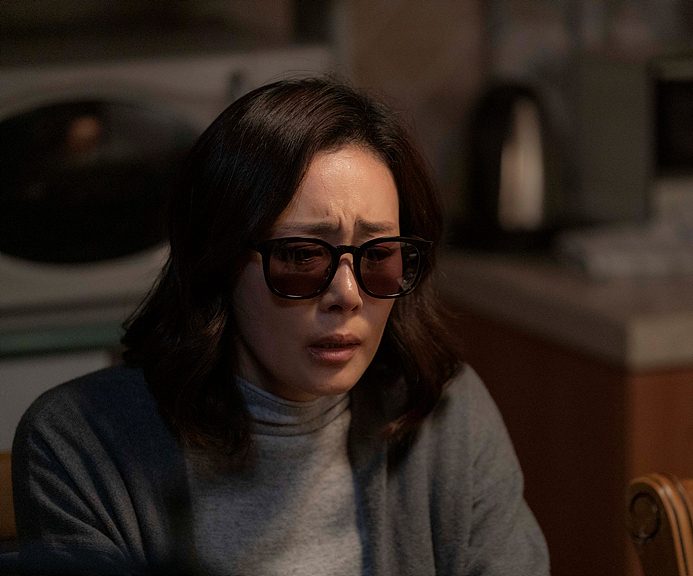
However, the drama fails to connect or prioritise them in a satisfying, consistent manner. It remains unclear whether certain storylines were entirely necessary and altogether important when one considers the final outcome. Instead, each character represents their own unique trauma; while this reflects reality, it lacks coherence in terms of a story. Another approach would have been to connect characters and storylines based on a common shared experience, à la Just Between Lovers. Perhaps this is why the Shim sisters story is so effective — it connects four separate characters, each with their own unique experience of the same trauma.
Ultimately, the drama takes on a broad an array of sociocultural issues, from suicide attempts to abandonment, without making it clear which is at the heart of the story, which might be a result of the show’s realism.
Still, When the Weather is Fine manages to deliver warmth to audiences. It’s sweet yet realistic depiction of romance and quirky second lead romances are fresh and entertaining. Perhaps the show might best be enjoyed as the “cup of poetry” it references, and audiences should watch it slowly, pour it over, sip it again, and enjoy it as if they were drinking tea.
(Images via JTBC. Family Violence From a Global Perspective: A Strengths-Based Approach: SAGE Publications.)

